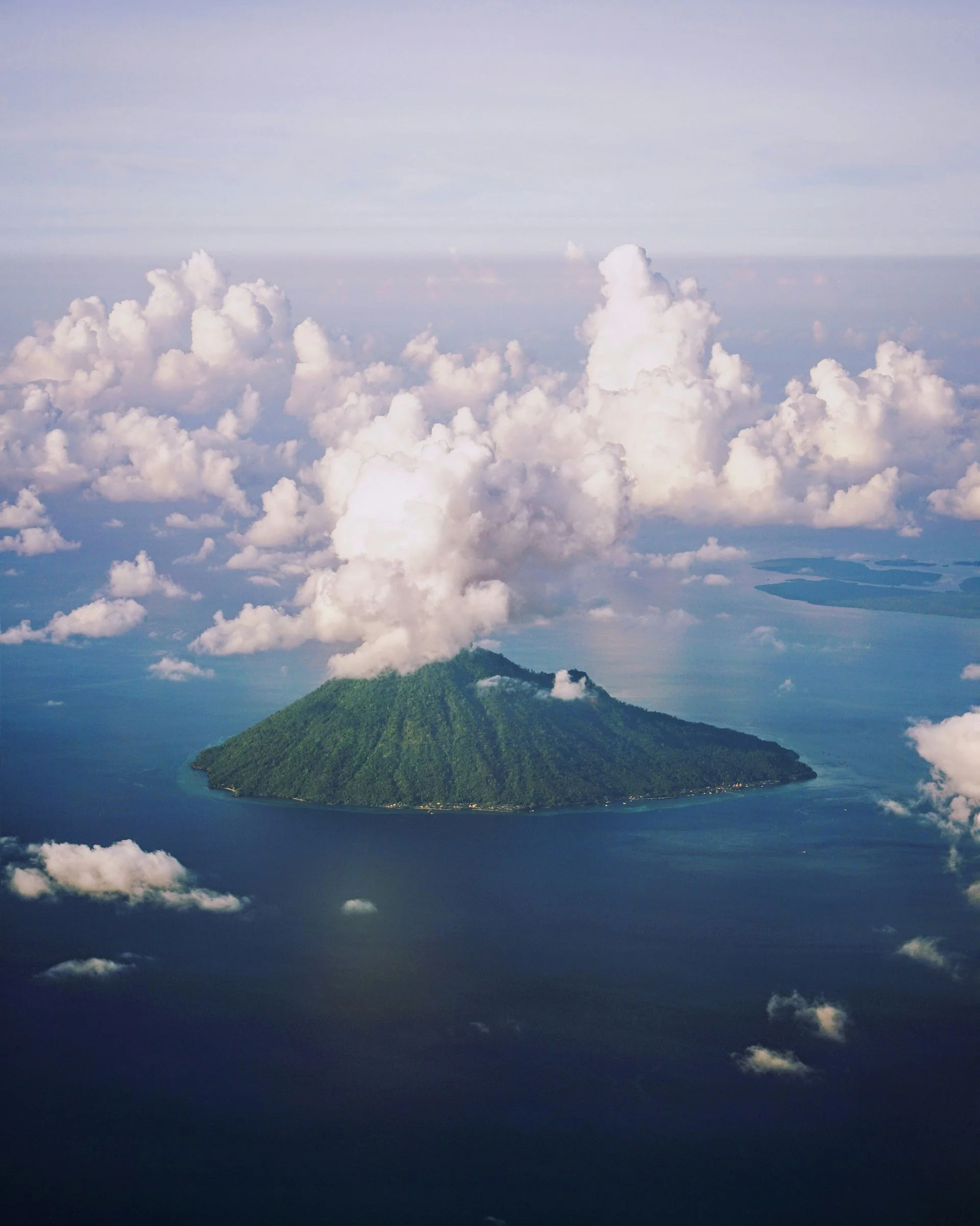Scuba Diving in Manado
The Ultimate Guide
Tucked away in northern Sulawesi, Manado’s coastal waters and Bunaken National Park are a diver’s dream. Sheer coral walls plunge into the deep blue, exploding with sponges, sea fans and tropical fish, while the mainland coast hides muck‑diving gems with seahorses, ghost pipefish and mimic octopus. Dolphins and pilot whales sometimes cruise past, green turtles nap on the reef, and reef sharks and schooling jacks patrol the drop‑offs. Whether you like effortless drift dives along walls or critter hunting in sand and seagrass, Manado balances big‑fish thrills with macro treasures. Warm waters, friendly locals and laid‑back resorts make it perfect for both serious underwater photographers and casual holidaymakers.
Difficulty
Moderate
Temperature
27-29°C
Visibility
20-40m

Diving Highlights
Best Months to Dive
Getting to Manado for Diving
✈️Transportation
Fly into Sam Ratulangi International Airport (MDC) via Jakarta or Bali; there are also direct flights from Singapore and Guangzhou.
From the airport, it’s a 30‑minute drive to Manado’s waterfront.
Resorts arrange speedboats to Bunaken (about 45–60 minutes), while budget travellers can take the daily public boat departing between 14:00–15:00 from the city’s market (no service on Sundays) and returning in the morning.
Private charters are readily available if you prefer flexibility.
Country
Indonesia
Currency
Indonesian Rupiah
Electricity
220V, 50Hz,Euro Plug
Cost of a Dive Trip in Manado
Day Trip
Dive Resort
Liveaboard
Meal
Accommodation
Best Dive Sites in Manado
🐠Raymond's Point
A spectacular vertical wall on the western side of Bunaken, Raymond’s Point is swept by strong currents and ideal for drift diving. Divers explore overhangs and a large cave while watching reef sharks, schools of fusiliers, angel fish, butterfly fish, groupers, lionfish and lobsters. Hard and soft corals blanket the wall, but the currents demand experience and caution.
🐢Mike's Point
This amphitheatre‑shaped wall is draped with black corals and giant gorgonian sea fans. The topography and occasional heavy currents make for thrilling dives. Reef sharks and eagle rays are frequent visitors, and lucky divers may spot silvertip sharks patrolling the deep.
🦈Mandolin
Mandolin is a stepped wall riddled with small caves and swim‑throughs. Currents can be fierce, but the reef top is a macro photographer’s playground, with bannerfish, damselfish, barracuda, eagle rays, fusiliers, groupers, napoleon wrasse, sea snakes and turtles providing constant action.
🐙Celah Celah
Close to Bunaken’s main beach, Celah Celah has a series of large caves and swim‑throughs suitable for both day and night dives. Its superb hard and soft coral cover and resident critters make it a favourite among photographers and macro hunters. Conditions are generally mild year‑round.
🐚Pulau Bunaken Wall
The main wall around Bunaken Island features dramatic drop‑offs plunging to hundreds of metres. Gentle currents allow divers to drift past enormous sponges, sea fans and black coral bushes while schools of jackfish, snappers and surgeonfish stream by. Turtles are everywhere, and dogtooth tuna and trevallies patrol the blue. This iconic wall epitomises Bunaken’s vertical reef diving.
What Divers Say About Diving in Manado
Earl Philip
Technical DiverManado blew me away. The walls in Bunaken are dizzying—just drop over the edge and you’re in a vertical universe of sponges, gorgonians and swarms of anthias. 🐠 The currents can really kick, but that’s half the fun: drift along the wall, watch jackfish and barracuda swirl by, then pop up into a kaleidoscope of healthy reef on top. On the mainland we went from big to tiny—frogfish the size of a fingernail, ornate ghost pipefish hiding in feather stars and even a mimic octopus waving its arms in the sand. 🤿 The boats are comfy, the guides are eagle‑eyed and spotting green turtles is almost guaranteed. If you’re torn between wall diving and muck, Manado gives you the best of both worlds.
Frequently Asked Questions About Diving in Manado
When is the best time to go diving in Manado?
Manado offers good diving year‑round. April–October is the dry season with calm seas and crystal‑clear visibility, while November–March is wetter with more nutrients and critter activity.
What marine life can I see?
Expect green and hawksbill turtles, reef sharks, schooling jackfish and barracuda, napoleon wrasse and bumphead parrotfish. Macro fans will love seahorses, frogfish, nudibranchs, mimic and wonderpus octopus, and ghost pipefish.
Are the dive sites suitable for beginners?
Many sites are gentle walls or sandy slopes suitable for beginners, especially on calm days. However, some walls have strong currents and should be tackled with experienced guides.
How many dive sites are in Bunaken and Manado?
Bunaken National Park and the Manado coastline boast around 50 named sites, from dramatic drop‑offs and sea caves to seagrass muck dives.
Can I dive with manta rays in Manado?
Manta rays are rare here; instead, you’re more likely to encounter turtles, reef sharks and schooling fish. Mantas are more common in nearby Raja Ampat or Komodo.
What are the water temperatures and visibility?
Water temperatures stay between 27–29 °C year‑round. Visibility on the walls is often 20–40 m in the dry season and 15–25 m in the rainy season.
Should I choose a liveaboard or day trips?
Liveaboards allow you to wake up at remote walls and combine Bunaken with Lembeh or Bangka, but most divers are happy with day trips from comfortable resorts in Manado or on Bunaken itself.
Can I combine Bunaken wall dives with muck diving?
Absolutely. In a single trip you can spend one day drifting along vertical reefs and the next hunting for seahorses and frogfish on the mainland’s sandy slopes.